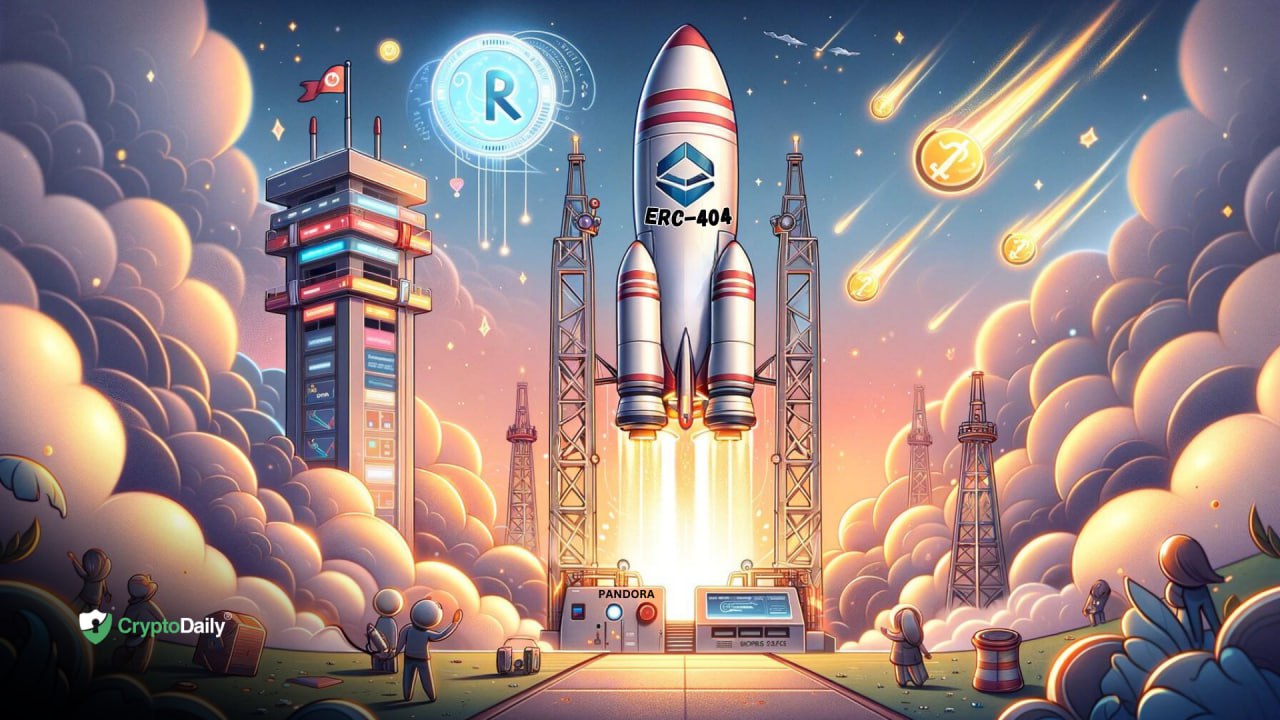Table of Contents
- New Token Standard
- Native Liquidity And In-Standard Fractionalization
- New Standard Yet To Receive Full Audit
- Pandora Soars To Unprecedented Levels
ERC-404, a novel and experimental token standard on Ethereum combining the attributes of NFTs and cryptocurrencies, has rocketed to a $170M market cap, generating $87M in trades.
Tokens on Ethereum currently fall under two broad categories: non-fungible ERC-721 tokens and fungible ERC-20 tokens.
New Token Standard
The new token standard ERC-404, which combines the features of NFTs and fungible tokens, has generated considerable hype and momentum in the Ethereum ecosystem. The first ERC-404 token to use this standard, Pandora, has seen a substantial spike in value and is currently trading at $16,600, an increase of 5000% since its launch on the 2nd of February. According to data from DEXscreener, Pandora has reached a market capitalization of $166 million. On the Blur marketplace, Pandora tokens currently have a floor price of 7.45 ETH and over 1300 token holders.
The new token standard offers a unique approach to projects that combine the tradable nature of ERC-20 tokens and the non-fungible qualities of ERC-721 tokens.
Native Liquidity And In-Standard Fractionalization
Pandora’s GitHub states that the experimental standard brings native liquidity and in-standard fractionalization. The implementation of ERC-404 tokens through the Replicants NFT collection has drawn considerable interest from traders, leading to around $87 million in volume on decentralized exchanges and $1 million on NFT marketplaces. This puts them in the top 15 NFT collections in the market.
New Standard Yet To Receive Full Audit
While it has generated considerable hype, ERC-404 has yet to receive a full external audit. A token standard refers to a set of rules smart contracts must abide by. For example, the ERC-20 token standard is a set of rules tokens must abide by, while the ERC-721 token standard is a series of rules non-fungible tokens must abide by. With both standards combined, each Replicant holds the qualities of both an NFT and a token.
This is different from fractionalized NFTs, in which a single NFT is broken up into tradable pieces. The new token standard significantly improves liquidity and the availability of funds for NFTs, which are notoriously illiquid assets. Users also don’t have to list their NFTs and wait for another user to purchase them. They can sell the token on a decentralized exchange like Uniswap. However, the token standard does have a few consequences.
For example, the linked NFT is destroyed if a user sells the token. This dynamic, where a new NFT is created upon the purchase of a full token, has led to the trading volume on decentralized exchanges spike considerably due to users trying to re-roll and get a red Replicant, the highest tier in rarity availability. This has been quite beneficial for liquidity providers on the token’s Uniswap pool. The 1% fee on trades executed in this pool has seen just under $1 million in fees collected since the 3rd of February.
Pandora Soars To Unprecedented Levels
Meanwhile, the PANDORA token has surged to unprecedented levels and is currently trading at $21,344, up by over 126% over the past 24 hours, with traders making staggering profits. On the 6th of February, Lookonchain tweeted about a trader making a profit of $1.2 million in just two days. This was when the token was trading at $8600.
“The price of #Pandora, the first token built on the #ERC404 token standard, has now risen to over $8,600. A trader has made a total profit of ~$1.2M on #Pandora in just 2 days! The trader spent 97,484 $USDT to buy 154 #Pandora at $633 2 days ago and sold 25 #Pandora for 188,695 $USDT at $7,548 1 hour ago, realizing a profit of 91,211 $USDT. The trader currently holds 129 #Pandora ($1.1M), and the unrealized profit is $1.1M.”
Disclaimer: This article is provided for informational purposes only. It is not offered or intended to be used as legal, tax, investment, financial, or other advice.
Investment Disclaimer










